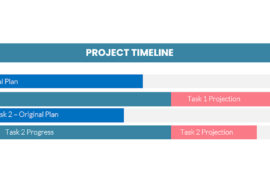 All in one thinking is built into our industry
All in one thinking is built into our industry
Many years ago I wrote several articles about the differences in choosing an all in one Finance system vs best of breed functionality. My focus was mostly about project management, but the concept can carry across many systems.
The notion of all-in-one corporate systems became popular in the 90s. Large integrated systems like SAP or Oracle Financials were able to point to multi-function systems which included in their core modules the General Ledger, Accounts Receivable and Accounts Payable systems that we think of as common to all Finance systems. Then in a second tier of functionality: Invoicing, Project Costing, Payroll and Inventory were attached.
The biggest barrier to these systems becoming pervasive was that integrating such varied functionality was often complex. The stated benefit of using the all-in-one provider was that there was less work to integrate the different modules yet just defining the business logic of multiple such modules linking together can be an overwhelming project in itself.
So, the disadvantages of choosing best of breed didn’t seem so disadvantageous after all.
Yet, the concept of going with all one vendor has continued.
In the last 5 years there has been a push from the large scale integrators to move all business functionality to the cloud. Office is the dominant word processing, spreadsheet, presenter suite and it is available online as Office 365. Microsoft will explain that you can build any additional functionality you wish in its accompanying Azure system. That’s awesome so long as you are ready to embrace all the Microsoft technology that’s already there. So, if you prefer to do your work with any Oracle tools, this won’t be your best plan.
Oracle now has cloud offerings. Enterprise Business Suite is one of the big competitors to SAP and it too is now available online. Here too you can build whatever you wish inside of the Oracle cloud based architecture. But what about Microsoft SQL Server? No. That’s found over on the Microsoft side.
What I’ve found fascinating about this is that in the last few years, just as it was in the 1990s, these systems have not become all powerful. Microsoft has softened its “we’re all in” slogan to endorsing hybrid architectures where some functionality is online and some in house as the ideal.
Online infrastructure offerings such as Amazon’s Web Services (which host such modest online offerings as Adobe, Netflix and Intuit) continue to flourish. How is this possible if all-in-one is all-powerful?
CRM systems are offered by both Microsoft and Oracle yet Salesforce still seems to be growing. That makes no sense if all-in-one means always-better since Salesforce doesn’t offer core Finance modules such as a General Ledger or Accounts Receivable.
In my own industry, TimeControl has always lived as a best of breed solution. Over the last 25 years we’ve had many requests for it to be extended to include all-in-one functionality. We’ve been enticed to create a complete project planning or project portfolio management system. We’ve been asked outright if we would extend TimeControl to be a payroll system and/or a Human Resources system.
Thus far we’ve resisted all these suggestions.
We are committed that TimeControl be the best of the timesheet world and TimeControl has become just that. It is already the most flexible timesheet in our industry and the timesheet home for hundreds of thousands every week.
Yet that alone doesn’t mean that TimeControl is the ideal solution for everyone who finds it. We encourage organizations to define their business problems before considering the solution and our prospective clients take us to heart. We have asked more than one organization to pause for a moment to be sure they know what they are looking for before deciding that we are it.
Shouldn’t the same type of thinking apply to all software vendors? Back in the early 80s when I first entered the IT industry, there was a saying “You never get fired for buying blue”. It referred to IT purchasers selecting IBM as their vendor. IBM’s logo was blue, you see and they were by far the dominant computing vendor at the time. Large IT vendors who espouse all in one solutions have similar pitches.
How could you go wrong buying all Microsoft? Or all Oracle? Or all SAP or all… well you pick the vendor. The decision will always be defendable and in a complex IT market, it takes a seasoned purchaser and business analyst to pause long enough in the evaluation stage to make sure that the benefits of going with one vendor outweigh getting the best of breed for different functionality.
Yet, even in the large scale vendors, there is room to bring in “outside” systems. We had a client this past year who informed their large scale vendors that their systems must support TimeControl as they had already deployed thousands of TimeControl licenses and the data from TimeControl was already well established as a core process and a core source of key metrics for the organization. Magically, vendors who had said the only option was to go with an all-in-one, found their integration functionality much more interesting and the winning vendor got to work with us on integrating their systems with ours.
I would be remiss if I didn’t say that for some organizations, the all-in-one approach is ideal and a great fit for their requirements. We have known many organizations who have successfully solved their IT business challenges this way. My own HMS is partners with some of the largest IT vendors and we are able to work together on many occasions to make a solution fit the client.
Yet, as we approach that most festive of times for IT vendors (the end of the 4th Quarter and the end of this year’s quota’s), it is a better time than ever to make sure as an organization you are putting the business problems at the core of your search, not the promises of whatever vendor shows up next.
Make us do the work to show you how we can solve your particular business challenges rather than taking the path of least resistance and matching your requirements to fit the functionality presented.
Is the answer “All-in-one” or “Best-of-Breed”?
Doesn’t that depend on the question?




